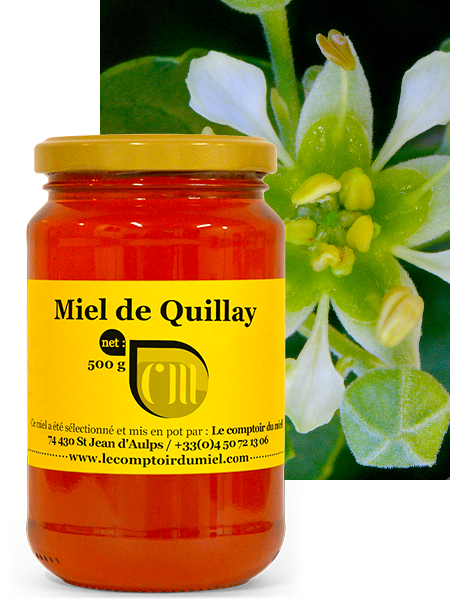Quillay is also called rosewood or Panama wood. It is an endemic tree of Chile. Its large white flowers are a bee’s delight when they bloom in the Chilean sun. Chilean sun. In fruit tree plantations, to avoid the appearance of certain insect pests, it is customary to interplant Quillaja with fruit trees of other species.
This helps manage certain insect pests around fruit trees. As a result, there’s no need for pesticides or other treatments. All this creates a certain micro-climate, which is conducive to a variety of plant and animal species. The aim is to promote the well-being of an orchard through the association of several living elements (plants, animals, soil life, etc.). This enables beekeepers to harvest healthy, natural Quillay honey.
Taste, flavour, preservation:
Quillay honey from Chile is dark in color. However, as it thickens, its hue becomes lighter. Its aromatic taste remains long in the mouth. Its shelf life is excellent.
Properties of Quillay honey from Chile :
Quillay naturally contains saponin known for its many virtues. It is a natural expectorant that can treat asthma. It also acts as a sudorific, helping to reduce fever. Saponin is also said to be a vermifuge and seems to have effects on certain types of parasites.
Did you know ?
Quillay bark contains a component that has become a coveted booster for vaccine formulation, saponin, which could now become a natural adjuvant for formulating a possible preventive remedy against coronavirus. According to an academic at the University of Chile’s Faculty of Forest Sciences and Nature Conservation, saponin acquires a special role given its potential capacity to stimulate the immune system to generate a good response to a vaccine. Saponin is used “in medicine, in respiratory and respiratory and skin diseasesand as an adjuvant for animal and human vaccines”.
